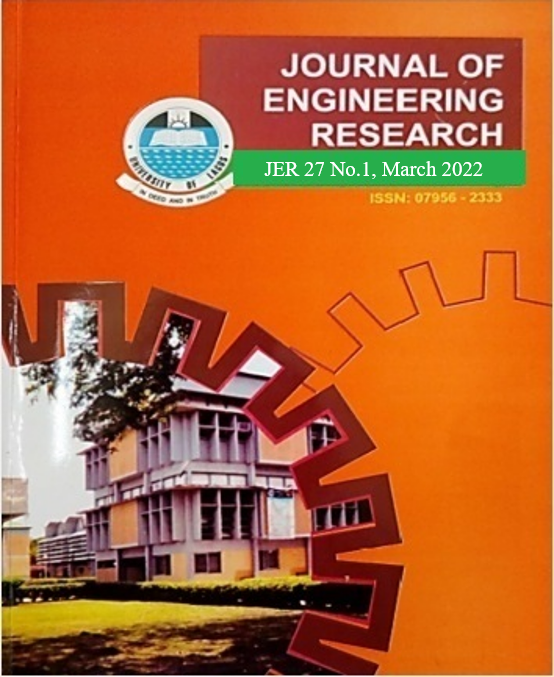Rainfall Forecasting for Odeda, South-Western Nigeria using a Seasonal ARIMA Time-Series Model
Abstract
rainfall occurrence within Odeda in Southwestern Nigeria. For this purpose, rainfall records spanning from January 1982 to December 2016 of the Ogun-Oshun River Basin Development Authority weather station were used to develop the model. The box-Jenkins approach was adopted in which tentative models were identified by the visual inspection of the charts of the autocorrelation function (ACF) and partial autocorrelation (PACF) of each model after subjecting the raw data to seasonal differencing of order 1 and ordinary differencing of order 1 to eliminate seasonality. The coefficient of determination (R2), Bayesian information criterion (BIC), and Root Mean Square Error (RMSE) were used also used to select preliminary models as criteria before each model selected was subjected to diagnostic checking by inspection of the ACF and PACF charts for noise residuals, histogram of noise residuals for normality, and normal Q-Q plot of noise residuals. The best model was observed to be a Seasonal ARIMA (3,1,3) (2,1,1)12 model having satisfied all the selection criteria. This model was used to validate a forecasted rainfall event between January 2017 and December 2018 and was found to be adequate with a coefficient of determination of 0.68 when compared with the actual rainfall events for that period. The model was used further to forecast rainfall events up to 2022.
References
Asadi, A., Vahdat, S .F. and Sarraf, A. (2013). The forecasting of Potential Evapotranspiration using time series analysis in humid and semi humid regions. American Journal of Engineering Research, 2 (12): 296-302
Bari, S. H., Rahman, M. T., Hussain, M. M., and Sourav, R. (2015). Forecasting Monthly Precipitation in Sylhet City Using ARIMA Model. Civil and Environmental Research, 7 (1): 69-77
Box, G. E .P. and Jenkins, G. M. (1976). Time Series Analysis, Forecasting and Control. Holden-Day Publication
Box, G .E. P., Jenkins, G. M. and Reinsel, G. C. (1994). Time Series Analysis, Forecasting and Control, Englewood Cliffs, N. J: Prentice Hall
Dimri, T., Ahmad, S., and Sharif, M. (2020). Time series analysis of climate variables using seasonal ARIMA approach, J. Earth Syst. Sci. 129:149
Graham, A. and Mishra, E. P., (2017). “Time series analysis model to forecast rainfall for Allahabad region”, Journal of Pharmacognosy and Phytochemistry, 6 (5): 1418-1421
Htike, K. K., & Khalifa, O. O. (2010). Rainfall forecasting models using focused time delay neural networks. In Computer and Communication Engineering (ICCCE), 2010 International Conference on (pp. 1-6). IEEE.
Jakasa, T., Androsec, I. & Sprcic, P. (2011). Electricity price forecasting –ARIMA model approach, Proceedings of the International Conference on the European Energy market (EEM) 25-27 May 2011, Zagreb, Croatia page 222-225.


